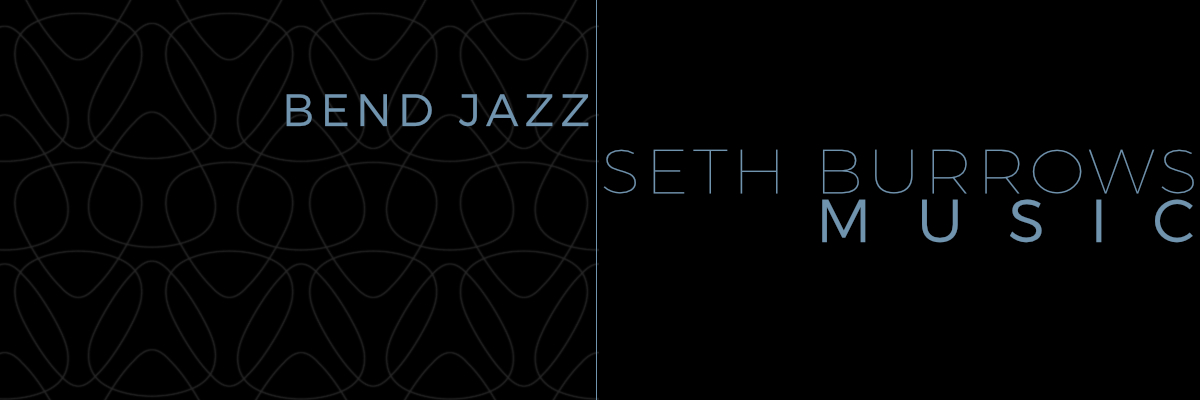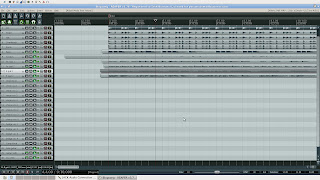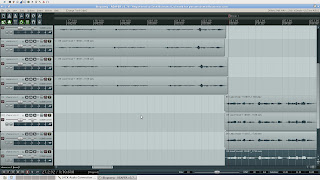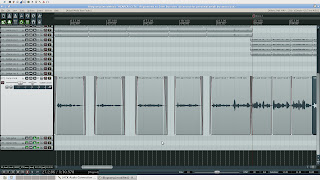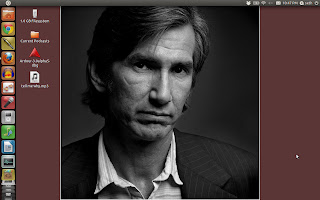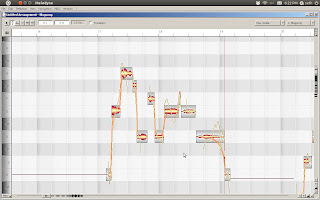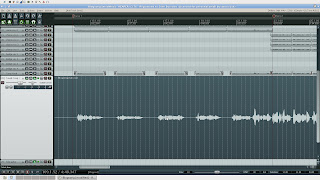Hey there non-followers! As promised, this week we will continue the (seemingly) never-ending saga of how I produce my demos. Last week, we got all the instruments into a kind of arrangement, and got the drums and bass into more or less their final form.
Now comes one of the hardest things about my demo recording process: recording, editing and tweaking the Final Lead Vocal. <gasp!>
Setting Up the Vocal Track
Depending on the song, I will first try a few takes, singing the song all the way through. When I listen back to these takes, I will get a feeling about whether of not I should “comp” a vocal track. Sometimes, though, one of the few tries I have just recorded is good enough– but that’s rare.
Let’s go through what happens if I determine that I have to “comp” a vocal.
Comping a Vocal
You have probably figured out by now that “comping” means “compositing.” I’m going to record lots of vocal tracks and take the best pieces to construct a “Really Good” vocal track. Here’s how it works in practice:
First, I set up twelve new tracks. Four of these tracks are dedicated to the verses, four are dedicated to the choruses, and four are dedicated to the bridge. Like this:
Second, I record each section all in a row–one after the other. Like this:
Third, I create a new track that will become the “Comp Vocal Track.”
Fourth, I dig in for a tedious listening session with headphones, LINE BY LINE. I evaluate each individual line against each of the other three. When I find the one I like, I snip it out and copy and paste it into the new track, being careful to put it in exactly the same place in time as the original. After all the pieces are in the right places, I crop them and fade them in and out, like this:
Then I do it to EVERY SINGLE LINE in the song, until I have a completed “Comp Vocal Track.”
Rendering the Comp Vocal
At this point, I have a vocal track that I’m basically happy with. It might seem like all of our hard work is done. Sadly, this is just the beginning.
The next step is to render the vocal as a 24 bit/ 48kHz mono file:
Why am I doing this?
Here’s the thing: I am the first to admit that I am NOT a great singer. I acknowledge my limitations. I also understand that at this particular point in the music industry, bad pitch in your vocal is considered passe. So, just like the majority of major label recording artists, I am going to use pitch correction software to pull the notes that are REALLY out of tune back into pitch. Let’s face it…it’s easier than practicing… O_o
Transferring the File for Tuning
So I’m going to be using Melodyne for this. Since I’m using Linux, I have to jump through hoops in order to use this program. Since Melodyne was written for Windows, I have to use WINE in order to have it work in Linux. To get low latency happening in WINE, I have to use the software packages wineasio and JACK to get everything to work.
There’s still a problem though: no matter what esoteric software hackery I try, I can’t get it to work on my normal desktop workstation. Therefore, I have to use a pretty involved work around using Dropbox and my Google Chrome Cr-48 Netbook.
The Cr-48 Interlude
Yep. I’m one of those people. In December, I received one of the Cr-48 Netbook computers from Google. The people who got these things were basically Beta-testers, to see if the Google Chrome Operating System was ready for deployment into the world. I used the Chrome OS for about a month, but was frustrated that there was no way to work offline. Therefore, I took a drastic measure: I flashed the BIOS and installed Linux on it. After a brief relationship with Linux Mint Debian Edition, I came back to Ubuntu 11.04 Natty Narwhal. I installed all the usual suspects, and much to my surprise and relief, Melodyne worked. So that became my work flow: use the Dell desktop machine to record, and use the Cr-48 for vocal tuning, using Dropbox to transfer the files.
Anyway, here’s what a Cr-48 looks like:
…and here’s what the Ubuntu installation on my Cr-48 looks like, just so you know:
Pitch Correction
Then I use Melodyne to fix some of the “pitchiness” of my vocal performance, like so:
Melodyne is a strange animal. It is easy to overdo. My goal in using it is to make it sound like I can stay on pitch at the ends of phrases and to correct any notes that are crazily off. The ear can really focus on the things that don’t sound natural, so it is best to use this kind of thing in moderation….with great power comes great responsibility…(sorry, since my son’s favorite super hero is Spider-Man this week, he asked me if I could put something about Spidey in my blog….so there ya go). If it ever starts to sound like a robot, I undo it and try again. I’m going for pitch correction that is as undetectable as possible.
When I’ve spent two hours editing the pitch, I export the fixed track to Dropbox, so I can import it back into REAPER on the other computer:
Here’s what it looks like imported back into REAPER:
…and here it is with effects applied:
Now just think: background vocals are exactly the same, but you also need to worry about how they match in TIME with the lead vocal. I don’t think I’m gonna get into that in this series…it’s gone on long enough as it is…
Next week we’ll get to mix prep and the rough mix…and then we will be done with this nonsense.
This week:
New song started. Better than last week’s…still not sure what to do about that mess….
Steve Goodman
John Prine
Michael Peter Smith
Todd Snider
Terry Allan
See ya next week.
